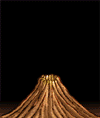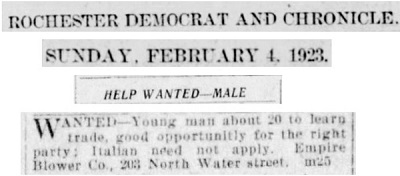Part 1
Nocera Inferiore
Part 2
Castellammare di Stabia
Part 3 - Brooklyn
Frank & Elizabeth
Lanzara Ancestral Chart
Giuseppe
Francesco
Cemeteries
Causes of Death
Photos
Documents
Email Me


Last update 3/29/2021

Vesuvio
This webpage represents my attempt to document the history of our family using all the information that I have been able to gather through my research. Most of the data was taken from written documents such as birth, marriage and death certificates, cemetery records, census records, and other records. I have also used information from “oral histories” told to me by my father, Eugene Lanzaro (1913-2000), and by his brother, Lawrence Lanzaro (1907-1994), cousins Dominick Lanzaro (1910-2000), John Lanzaro (1922-2000), Frank LaMura (1902-1983), and other family members to tie many of the events together.
It is my hope that this webpage will be used to share my information with other family members and to encourage them to share with me any information they may have. Please feel free to contact me by clicking on the "Email Me" link (larrylanzaro@gmail.com). You may also contact me by phone: 732-642-0382.
Our Lanzaro ancestral roots reach back in time and across the continents to Italy where originally our surname was Lanzara. Why and when the names changed is still a mystery. Suffice it to say that in Italy it's Lanzara and in America it's Lanzaro.
Several years ago I made attempts to obtain information from the original town in Italy that I knew my great-great-grandfather, Giuseppe Lanzara (1836-1901), came from. This was the town of Nocera Inferiore, located about 12 miles east of Naples, and only a few miles from the volcano, Mount Vesuvius. I knew enough at that point that Giuseppe's last name was spelled Lanzara and was able to obtain a transcription of his birth record. He was born in Nocera Inferiore on April 12, 1836.
Through the internet, I was able to find a list of several men living today in Nocera Inferiore named Giuseppe Lanzara, including their addresses. I wrote each of them a letter, in Italian, explaining my ancestry and asking if we could be related. Only one responded. This Giuseppe Lanzara has helped me to obtain most of the earliest data that I now have. Thanks to him I now know that Giuseppe's father was Diodato Lanzara (1800-1864). Then Giuseppe told me that his great-great-great grandfather was also Diodato Lanzara and his great-great-grandfather Giuseppe Lanzara, all from Nocera Inferiore. At first we were very excited that we were, in fact, cousins. Then Giuseppe did some more research of his own and discovered, even more incredibly, that his Diodato and Giuseppe were not the same as mine. At the present, we have yet to prove that we come from the same Lanzara ancestral line, but I'm sure back there somewhere our lines converge.
My great-great-grandfather, Giuseppe, had a brother named Francesco Lanzara (1844-1892). Eventually they made their way to another town nearby named Castellammare di Stabia and married two sisters, Petronilla Bonifacio (1844-1934) and Elizabeth Bonifacio (1851-1941). It was from Castellammare di Stabia that another generation made their way to America (Brooklyn), including the LaMura's.
They arrived along with the phase of immigration that began in the 1880’s as a result of the transportation revolution taking place on both land and at sea. New railroad networks throughout Europe allowed emigrants from East and Central Europe to reach new ports of embarkation, including Naples. There they embarked on steamships, which by the late 1870’s had replaced nearly all sailing ships. The combination of low fares and aggressive marketing made it possible for even the poorest ones to make the crossing. The steamship lines were the overall reason for the development.
In America, the new immigrants became the crucial part of the industrial revolution. Laborers replacing skilled workers, tenders of machines or human robots doing specific tasks. Jobs often held in disdain by native workers. These workers came to America experiencing an economic explosion. Railways grew from only 35,000 miles in 1865 to 242,000 by 1900, including five transcontinental railroads. By 1900, the United States had passed England as the world’s leading industrial nation. Considerable credit for this growth must go to the immigrant laborers.
The majority of these immigrant workers were Italians, Poles, Russians and Austro-Hungarians. The Italians became the road builders in America. Lacking mechanical skills, they could “contribute nothing more, and nothing more was asked of them, than the strength of their arms.” By 1890, some 90 percent of Italian wage earners in New York were engaged in public construction; they constituted a monopoly of the sanitation department in San Francisco and did 99 percent of Chicago’s roadwork. Italian laborers had the highest savings rate - $1.00 per day from wages of only $1.25-$1.65. The slogan was “A good job, save money, work all the time, go home, sleep, no spend.”
Native Americans, that is, those whose ancestors arrived in America many years before, were increasingly angered by the arrival of the new workers. The controversy included natives’ fears of job or wage loss, repugnance at the newcomers’ living conditions, patriotic stirrings and often a scarcely concealed racism.
This was clearly demonstrated in the Chicago Evening Journal that complained that “these Italians, like the Chinamen in this country, are aliens, not citizens,” and charged that those who import “cheap and ignorant Chinese, Polish and Italian laborers to compete with better men are public enemies.” This advertisement for employment appeared in a Rochester, New York Newspaper in 1923:

The entire story of our ancestors is told in much more detail by clicking on the links in the panel at the left. To get you started, here's the link to PART 1.